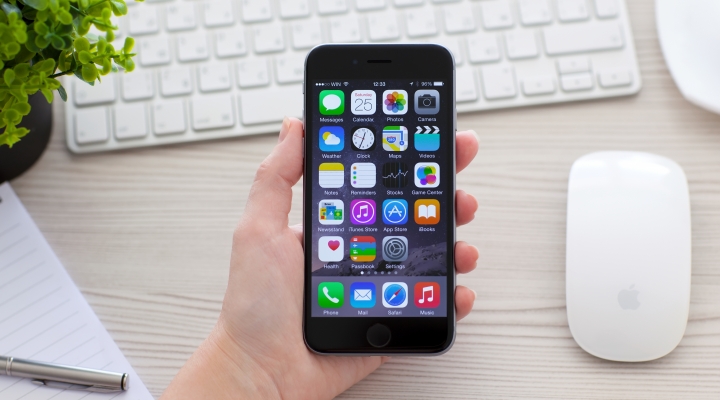Experiencing sluggish performance on your cell phone can be frustrating, especially when it disrupts daily tasks. The good news? It can be fixed. Start by restarting the phone and updating the operating system. Disable unnecessary background apps and animations to reduce strain on the processor. If the problem persists, consider a factory reset—but back up your data first. You can also reach out to a cell phone repair technician to help you with it.
How to Fix a Cell Phone Performing Slowly
Here are some repair solutions for you:
Solution 1: Restart Your Phone Regularly
A simple restart can solve many performance problems by clearing temporary files and freeing up system resources. To keep your phone performing at its best, it is recommended to restart your phone at least once a week.
Solution 2: Update Your Operating System and Apps
Manufacturers and app developers frequently release updates that address bugs and improve performance. Ensure your device’s operating system and all installed apps are up to date:
For Android:
- Navigate to Settings > System > System update to check for updates.
- Open the Google Play Store, tap your profile icon, and select Manage apps & device to update apps.
For iOS:
- Go to Settings > General > Software Update to check for updates.
- Open the App Store, tap your profile icon, and scroll down for available app updates.
Solution 3: Free Up Storage Space
Low storage can significantly impact your phone’s performance. Aim to keep at least 10% of your storage free by:
- Deleting unused apps.
- Removing duplicate or unnecessary photos and videos.
- Clearing cached data.
- Checking storage usage on Android devices by navigating to Settings > Storage.
Solution 4: Limit Background Processes
Apps running in the background consume resources and can slow down your device. Close apps you’re not using:
For Android:
- Open Settings > Apps, select the app, and tap Force Stop.
For iOS:
- Swipe up from the bottom of the screen (or double-click the Home button on older models) to view open apps, then swipe up on the app to close it.
Solution 5: Disable Unnecessary Animations and Features
Visual effects can strain your phone’s processor. Disabling or reducing these can enhance performance:
For Android:
- Enable Developer Options by tapping the build number in Settings > About phone seven times.
- In Developer Options, adjust the Window animation scale, Transition animation scale, and Animator duration scale to 0.5x or off.
- Developer Options allow developers to test apps, debug, and access advanced settings for app performance and features.
For iOS:
- Go to Settings > Accessibility > Motion, then enable Reduce Motion.
Solution 6: Manage Widgets
While aesthetically pleasing, widgets and live wallpapers consume resources. Limiting their use can improve performance.
On Android:
- Long-press on a widget to move or remove it. Long-press on the home screen to add new ones and select “Widgets.”
On iPhone:
- Touch and hold a widget to edit or remove it. To add a widget, tap the “+” icon at the top-left corner of the home screen.
Solution 7: Monitor Battery Health
A deteriorating battery can cause performance issues. Check your battery health:
For Android:
- Some models provide battery health information in Settings > Battery.
For iOS:
- Navigate to Settings > Battery > Battery Health to view maximum capacity and peak performance capability.
If battery health is significantly degraded, consider hiring battery replacement services.
Solution 8: Perform a Factory Reset
If issues persist, a factory reset can restore your phone to its original state. This process erases all data, so back up important information beforehand:
For Android:
- Go to Settings > System > Reset options > Erase all data (factory reset).
For iOS:
- Navigate to Settings > General > Reset > Erase All Content and Settings.
Causes of Slow Phone Performance
Several factors can cause your phone to become sluggish:
- Background Apps: Running multiple apps in the background uses resources and slows down your phone.
- Software Updates: Outdated software will slow down your device and make it vulnerable to security threats.
- Storage Capacity: When your device’s storage capacity is almost complete, it can cause your device to slow down considerably.
- Cache and Data Buildup: Over time, the cache and data begin to pile up, leading to poor performance.
- Too Many Widgets: Though widgets can be useful, too many can also slow down your phone.
- Malware and Viruses: Malicious software can harm your device and impact its functionality.
- Aging Hardware: Due to age, some devices might not keep up with new applications and operating systems.
Read More: How to Fix a Lagging Issue on Your Phone
Conclusion
You can enhance your phone’s speed by restarting your device, updating software, freeing up storage, and limiting background processes. Additionally, monitoring battery health and managing animations ensures your device runs smoothly. Understanding the causes of slow performance, such as too many background apps, outdated software, and excessive data buildup, will empower you to keep your phone functioning efficiently for years.

